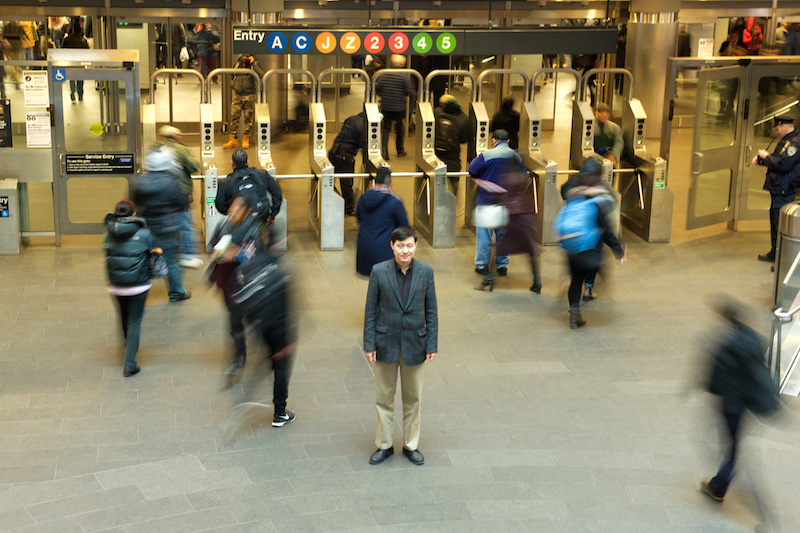
Each day, millions of people make their way through New York City’s bus, train and air transportation hubs. Keeping a close eye on their movement are thousands of cameras, positioned on every corner, stairwell and open space.
But what happens when an elevator breaks down? Where do crowds exit to the street if a stairway is closed? Worse yet, how might thousands of people evacuate if there is an emergency?
Now, thanks to a $50,000 grant from the U.S. Department of Homeland Security (DHS), Borough of Manhattan Community College (BMCC/CUNY) Computer Information Systems Professor Hao Tang is collaborating with DHS scientists to answer some of those questions by developing innovative crowd behavior simulation software.
The BMCC award came in January 2016 through the DHS Summer Research Team Program (SRT) for Minority Serving Institutions (MSI) program. Oak Ridge Institute for Science and Education (ORISE) administered the grant. Patti Obenour, Project Manager, Scientific Assessment and Workforce Development at ORISE said this is only the second time in the program’s 11-year history that it awarded this type grant to a two-year college.
Tang is using a portion of the funds to hire one undergraduate and a Ph.D. student to work with him for one year to help him develop the algorithm for the project.
He will work closely with a team of researchers at the Command, Control and Interoperability Center for Advanced Data Analysis (CCICADA) at Rutgers University, the State University of New Jersey. CCICAD is a U.S. Department of Homeland Security University Center of Excellence that uses advanced data analysis and systems to address natural and manmade threats to the safety and security of the American people.
Using existing, DHS provided surveillance footage from public spaces throughout New York City transportation hubs, Tang will construct computer software and an algorithm that measures the actual crowd distribution and density at various times and locations. He will then take those measurements and compare them to the numbers and measurements predicted by existing CCICADA crowd behavior simulation models.
In order to better design safe and effective evacuation models, real time crowd data should be used to verify, enhance and be integrated with the simulation models already in the works at CCICADA, Tang explained.
“If the real numbers [derived from the surveillance footage] are similar to the simulated numbers, it will show that the CCICADA simulation predictors are on the right track, that they are close to being realistic,” said Tang.
If the footage contradicts the predicted numbers, the CCICADA simulation model could be modified until the predicted results are consistent with the actual crowd distribution.
The BMCC/CCICADA research has the potential to not only impact national security, but could also influence the design of existing or new public buildings, according to Tang.
Tang added that the software does not have the ability to identify or track individuals, a concern raised by privacy advocates during discussions concerning surveillance.
Tang says the new DHS grant funded project is a great opportunity for BMCC to showcase its research and development skills to the rest of the country.
He said he appreciated the advisement and encouragement of both Dean John Montanez of BMCC’s Office of Grants and Research Administration and Helene Bach, Director of Research at BMCC.
“We are a teaching college, but, we have really important and innovative research happening here now,” said Tang.
STORY HIGHLIGHTS
- Only second time a DHS Summer Research Team Program (SRT) for Minority Serving Institutions (MSI) grant awarded to a two-year college
- Tang was awarded a $50,000 grant from Homeland Security
- Scientists are developing crowd simulation software

